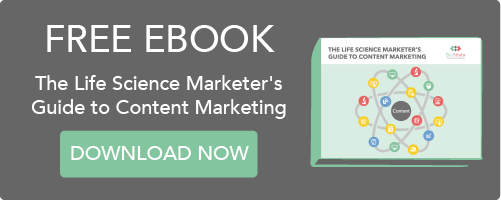
Marketing sure has changed dramatically over the years. While its murky prehistoric origins probably involved consumers weighing up the pros and cons of being bludgeoned with a rock, modern marketing strategy is more of a sophisticated tool for businesses to attract the attention of their ideal customers to their products and services.
But how did we get to the non-invasive, content-driven life sciences marketing strategy we enjoy today?
The answer is a fascinating one, and it draws on Darwin’s scientific theory of evolution through natural selection. More specifically, prevailing marketing strategies have always had to adapt to the technological and social factors of their environment.
Here are a few key points in the historical evolution of life sciences marketing strategy:
Printed advertising lay the groundwork for marketing as we know it.
While the printing press was invented in 1436, it was only in 1605 – nearly two centuries later – that the first newspaper was printed. This incredibly slow rate of technological development and adoption is indicative of pre-19th century marketing, as there was little in the way of mass production and distribution. With the industrial revolution, however, businesses could substantially increase their output and, therefore, benefit from the increased demand from a dedicated marketing strategy. But because the primary selective pressure facing marketers was technological, this was largely limited to posters, magazines and newspaper advertising – so much so that posters were actually banned in London in 1839.
This era of print-driven marketing was also the birthplace of content marketing. In 1895, agricultural equipment company John Deere released The Furrow – a magazine for farmers that sought to educate and inform rather than directly push products. The nature of print meant that customers could go through the pamphlet, magazine or brochure at their own pace.
Television and radio changed how businesses reached their customers.
From around the 1930s, this marketing strategy was largely drowned out by the direct, in-your-face approach of “buy our product!” advertising. That this shift occurred at roughly the same time as widespread adoption of the radio, telephone and (a bit later on) the television is no accident. The changing environment had again put pressure on marketers to adapt in order to avoid extinction (or, in this case, poor business results).
These new technologies were better suited for short, punchy and direct advertising messages, which indirectly changed how people consumed their marketing and paid attention to companies. The idea was that repetition of these sales messages would drive consumer action in the long run (even if most people were not ready to buy right away). And with so few media channels available, it was scalable, easy to control and – more importantly – it worked.
Marketing must now adapt to the digital consumer.
Increased access to information through technology like the internet and smartphones has helped mould the keen and discerning eye of modern consumers, who are better informed and more connected than any before them. This change in behaviour is yet another selective pressure driving companies to adopt a marketing strategy that’s more likely to resonate and influence modern consumers. And, with the explosion of media channels and the introduction of the internet, reaching and influencing people using an invasive outbound marketing strategy simply isn’t as easy or effective as it used to be. The war for customer attention has begun – the game has changed, and marketing needs to change again to meet these new selective pressures.
This is where content marketing enters the evolutionary picture – leveraging the freedom of information provided by the web and social media to attract and influence prospective clients. Content marketing can be a particularly effective strategy for life science companies, whose target audiences are specifically trained to seek out, analyse and interpret information on their own terms. As such, content marketing is the ideal way to provide them with the information they crave, thereby allowing them to educate and convince themselves on the best solution for their unique situation.
Is it time for your marketing mix to evolve?
Are your traditional marketing tactics failing to deliver like they used to? Is your marketing team feeling the selective pressure to change how you reach and connect with your customers and prospects? Perhaps content marketing can help. Download our free Life Science Marketer's Guide to Content Marketing to learn more.





